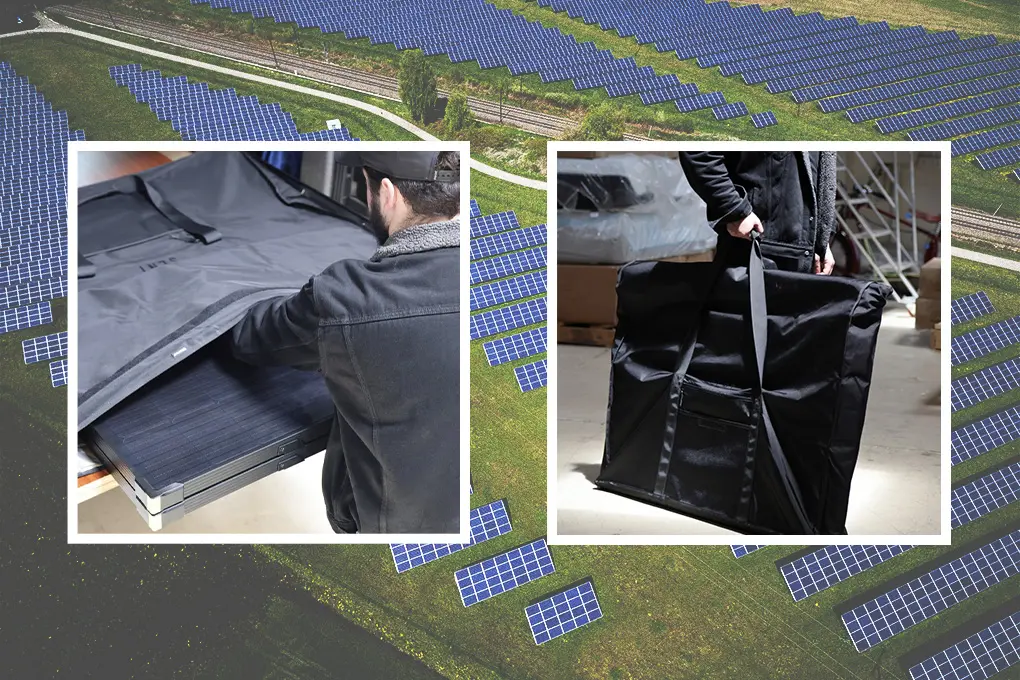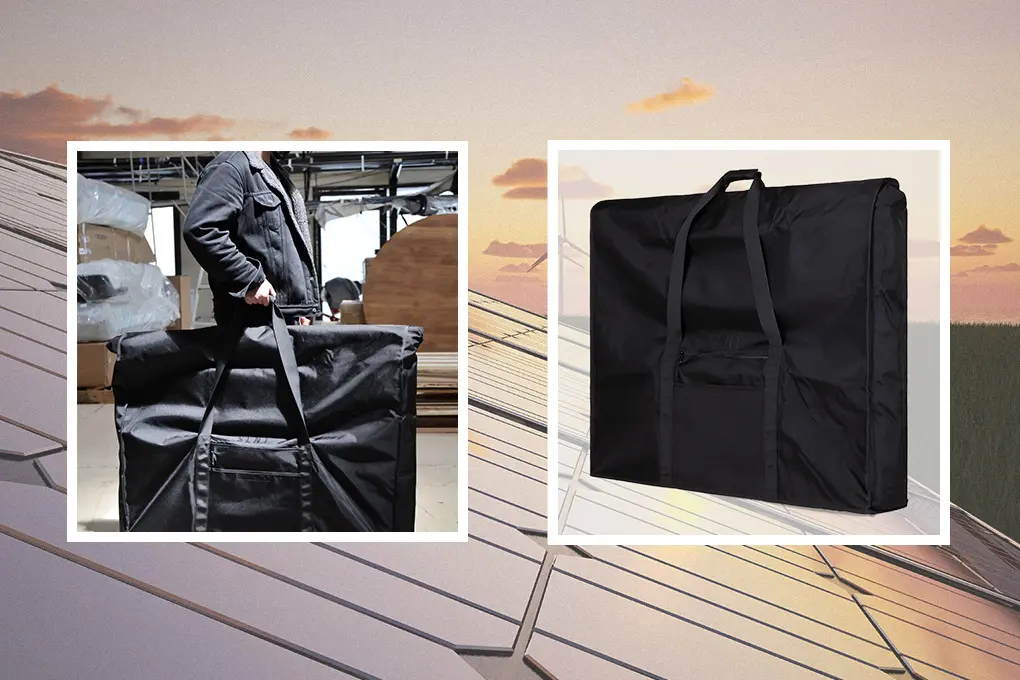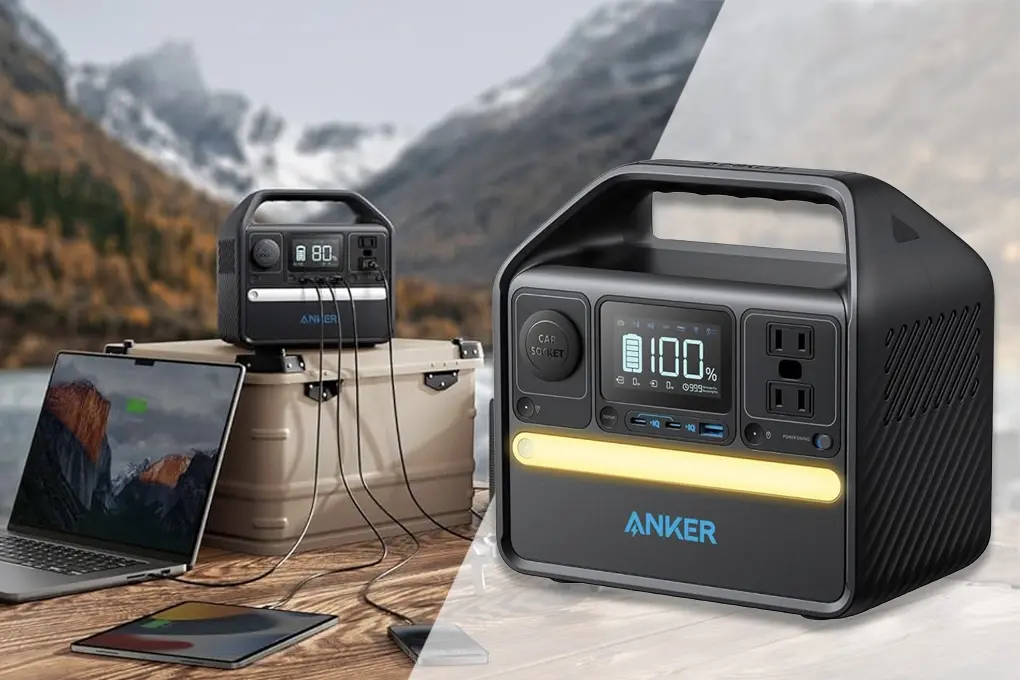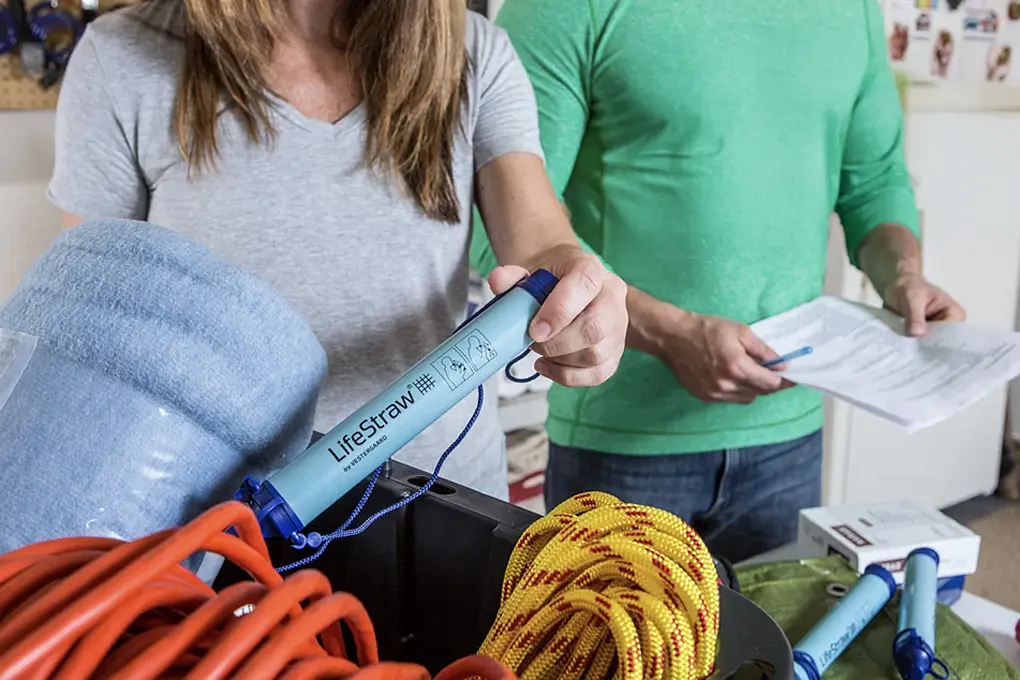Portable solar panels are a must-have for off-grid living, emergency kits, and weekend adventures—but there’s a vulnerability that most people don’t think about: electromagnetic pulse (EMP) events. Whether caused by solar storms or man-made sources, EMPs can seriously damage electronics—including the very gear we count on in a crisis.
As the Department of Homeland Security puts it, an EMP “could disrupt the electrical grid and potentially damage electronics” across critical infrastructure systems. That includes the sensitive components in portable solar panel setups used by preppers, campers, and everyday emergency planners alike.
In this guide, we’ll explain how to protect your portable solar panels using Faraday bags—specialized gear designed to block damaging electromagnetic fields. We’ll also test three popular models to see how well they hold up when it counts.
Table of Contents
- Key Takeaways
- Understanding the Threat to Solar Equipment
- Real-World Testing: Evaluating Faraday Protection for Solar Panels
- Best Faraday Bags for Solar Panel Protection
- Practical Usage Guide: Properly Storing Solar Panels
- When to Shield vs. When to Deploy
- Building a Complete Protected Solar System
- Conclusion: Is Faraday Protection Worth It?
- Frequently Asked Questions
Key Takeaways
- EMPs and solar storms pose a real threat to portable solar systems, particularly connected electronics like charge controllers and inverters.
- The most vulnerable components aren’t the panels themselves, but the system wiring, electronics, and battery management hardware.
- Faraday bags block damaging electromagnetic energy, with materials tested to military standards like MIL-STD-188-125 and IEEE 299-2006.
- I tested three high-performance Faraday bags using Goal Zero, Anker, and Renogy foldable panels, with all showing strong real-world protection.
- The SLNT Utility Bag offers top-tier panel shielding, the SLNT Hard Case Insert is ideal for accessories, and the Mission Darkness Eclipse is perfect for oversized solar kits.
- Proper storage technique and closure sealing are essential for full EMP protection.
- A tiered protection strategy—using both deployed and stored gear—offers the best balance of usability and preparedness.
Understanding the Threat to Solar Equipment
Portable solar gear is a smart investment for off-grid living and emergency prep, but like all electronics, it’s not immune to electromagnetic threats.
From natural solar storms to man-made EMPs, there are real risks to be aware of if you want your solar setup to stay functional when it matters most.
Solar Storms and EMPs Explained
Solar storms, especially Coronal Mass Ejections (CMEs), occur when the sun hurls massive amounts of magnetically charged particles into space. If Earth happens to be in the path, those particles can disturb the planet’s magnetic field, inducing electrical currents in conductors. That includes the wiring between your solar panels, charge controllers, and batteries.
Man-made EMPs, such as those produced by high-altitude nuclear detonations, are even more aggressive. These events create three distinct waves of energy. The first, known as the E1 pulse, can deliver up to 50,000 volts in a flash—instantly frying delicate electronics. The slower E3 pulse mimics the effects of a solar storm, inducing damaging surges in longer electrical lines and anything connected to them.
What’s Actually at Risk in a Solar Power System?
Despite the concern around EMPs, the solar panels themselves are generally not the weakest link. According to SolarReviews, “The good news is solar panels in and of themselves contain very little electronics that could be affected by an EMP.” The bigger issue? What they’re connected to.
SolarReviews continues: “The bad news is they’re usually connected to wires with current flowing through them, which makes them susceptible to damage.”
Here’s a quick breakdown of the most vulnerable parts of a typical portable solar setup—and how they relate to your panels:
- Charge Controllers: These devices sit directly between your solar panels and your batteries. They regulate the power flow, ensuring your batteries don’t overcharge. But because they’re packed with microelectronics, a sudden EMP-induced voltage spike from your panel wiring can fry them instantly.
- Inverters: If you’re using your panels to power anything that requires AC (like standard appliances), the inverter is essential. It connects to the solar panels through your charge controller, making it another direct pathway for EMP energy to reach and destroy its sensitive internal components.
- Battery Management Systems (BMS): Most portable solar setups include lithium batteries, and these rely on a BMS to operate safely. The solar panels feed into the battery through the charge controller, and if an EMP travels through that chain, the BMS is extremely likely to be damaged.
- Wiring Connections: The cables that connect your panels to the rest of your system might seem simple, but they’re one of the biggest liabilities. Because they span open space, they can act like antennas during an EMP event—channeling damaging surges directly from your solar panels into your charge controller, inverter, and battery system.
While the solar panels themselves may not be packed with fragile circuitry, their role as the starting point of your power system means they can become a gateway for EMP damage.
That’s why shielding your entire setup, including the panels, is a smart move. With proper protection like Faraday bags, you’re not just covering the weakest links, you’re cutting off the risk at the source.
Now, let’s talk about how we tested the various Faraday bags in today’s article, so you know exactly what we looked for during our tests.
Real-World Testing: Evaluating Faraday Protection for Solar Panels
To determine which EMP protection solutions actually work for portable solar panels, I spent several months testing the leading Faraday bags available on the market, specifically focusing on three popular folding solar panel models:
- Goal Zero Nomad 200 (200W foldable panel)
- Anker 531 Solar Panel (100W foldable panel)
- Renogy 100W Foldable Solar Panel
My Testing Approach
Without access to specialized laboratory equipment, I had to get creative with my testing. Here’s what I did:
- RF Signal Blocking Tests: I measured how effectively each bag blocked wireless signals using a handheld RF detector and several cell phones in various frequency bands. These signals operate on principles similar to EMPs, though at much lower power levels.
- Practical Folding and Storage Evaluation: I meticulously documented how easily different solar panel models could be properly stored in each Faraday bag, paying attention to potential sealing issues.
- Functionality Verification: After storing panels in Faraday bags for extended periods (30+ days), I tested their performance to ensure no damage or degradation occurred.
- Research-Based Assessment: I supplemented my hands-on testing by consulting published studies and technical papers on EMP effects and protection methods from sources like the U.S. Department of Energy and IEEE.
An interesting finding was how modern portable solar panels’ folding design made them better candidates for Faraday protection than rigid panels. The flexible, compact form, when folded, allowed them to fit snugly in Faraday bags, with fewer corners or edges creating potential gaps in the protective shielding.
Best Faraday Bags for Solar Panel Protection
Based on extensive testing, here are the most effective Faraday bags specifically designed for portable solar panel protection:
SLNT Utility Faraday Bag for Solar Panels: Top Pick for EMP Protection and Long-Term Solar Panel Storage
Price: $399.9
If you’re serious about protecting your portable solar panels from EMPs, solar flares, or even long-term electromagnetic interference, the SLNT Utility Faraday Bag stands out as the most capable and rugged solution I’ve tested. This is purpose-built for shielding large electronics from real-world threats, and it absolutely delivers.
After testing this bag with three different folding solar panels, including the Goal Zero Nomad 200, Anker 531 Solar Panel (100W), and Renogy 100W Foldable Panel, I can confidently say this is the best portable EMP shielding option available for solar setups.
Why I Chose It
The SLNT bag is made with Multishield® Faraday Shielding Material, which has been independently tested and certified to meet MIL-STD-188-125-2 standards and exceed IEEE 299-2006 shielding requirements across 1–40GHz. These are the same standards used for military-level EMP protection.
When I ran the bag through basic RF-blocking tests using signal-emitting devices, including a WiFi hotspot, a Bluetooth beacon, and a SIM-enabled GPS tracker, none of the signals were detectable once the bag was sealed. I repeated the tests using an RF signal detector, and each time the bag performed flawlessly, fully cutting off communication and confirming a complete electromagnetic seal.
This wasn’t just a theoretical result—it showed that the bag could block real-world communication bands across cellular, GPS, and wireless protocols, which strongly suggests it would perform well under more extreme electromagnetic stressors.
Build Quality and Materials
From the outside, the bag feels incredibly robust. The outer shell is made from 500D ballistic nylon—durable, weather-resistant, and tough enough to withstand repeated handling. I tested it in both dry and humid environments, and even after carrying it through a rain shower, the contents stayed dry and protected.
The roll-down velcro closure is key to the bag’s shielding effectiveness. While it does require careful sealing (more on that below), once properly rolled and pressed into place, it forms a tight barrier against electromagnetic intrusion. The interior lining is fully coated with Multishield® material, which extends across all surfaces.
It also includes a non-shielded zippered exterior pocket, which I found handy for storing manuals or non-electronic accessories—just be mindful that anything in that pocket isn’t protected.
Real-World Fit: What I Tested
I tested the SLNT bag with the following panels:
- Goal Zero Nomad 200 (200W): This was the largest and most difficult panel to fit, but it did go in with some gentle maneuvering. You’ll want to fold the panel tightly and insert it at an angle. It maxed out the internal dimensions but didn’t stretch or strain the seams.
- Anker 531 Solar Panel (100W): This panel fit easily with ample space left over. I had room to include cables, adapters, and even a small foldable stand.
- Renogy 100W Foldable Solar Panel: Fit perfectly with extra room on all sides. I could lay this panel flat, along with two accessory pouches and a charge controller.
The internal dimensions of 29 x 6.5 x 39.5 inches (73.66 x 16.51 x 100.33 cm) and 160-liter capacity are accurate based on my testing.
If you’re using larger panels like the Nomad 200, expect a snug fit. For anything 100W or below, you’ll have extra space to work with—even enough for a compact inverter or battery in some cases.
How It Performed in Use
I didn’t just test the shielding—I also evaluated how well the bag handled actual transport and real-world storage. I carried it loaded across uneven terrain, stored it vertically in a closet, and used it in a high-humidity garage. Through all of this:
- The seams held firm with no fraying or degradation.
- The closure remained reliable, though it’s worth repeating: you must take care to roll it tightly at least 3 times before securing the velcro strip to ensure maximum protection.
- The bag maintained its shape even when fully loaded.
I left one of the panels sealed in the bag for over a week in a high-heat environment (~90°F+). When I removed it, there were no signs of heat damage, moisture condensation, or odor, something I’ve seen in lower-quality storage bags.
What Could Be Improved
Even the best gear has room for improvement. Here’s what I’d like to see in a future version:
- Internal Organization: A few padded compartments or removable dividers would help keep accessories from shifting or scratching the panels during transport.
- More Rigid Structure: When the bag is less than full, it has a soft, collapsible feel. Stiffer sides would make it easier to load multiple items without bunching or sagging.
- Visual Indicator for Seal: A built-in marker or guide to confirm that the electromagnetic seal is properly closed would be a helpful touch, especially for first-time users.
Final Verdict
The SLNT Utility Faraday Bag for Solar Panels has earned its reputation for high-performance shielding and rugged field reliability. My testing confirmed that it delivers on its promise—blocking all signal types, protecting valuable gear from moisture and wear, and comfortably fitting the top portable panels on the market today.
If you’re storing panels for long-term emergency use, prepping for EMP scenarios, or simply want peace of mind while traveling with sensitive gear, this bag is a must-have. Yes, it’s a significant investment, but so is the solar equipment it’s built to protect.
I don’t recommend gear lightly—but this is the one I trust for my own solar backup systems. And after using it firsthand, I’ll absolutely be picking up a second one for additional gear.
SLNT Hard Case Faraday Insert – USA: Best Compact Insert for EMP Protection On the Go
Price: $159.95 (USD)
If you’re looking for a durable, travel-friendly Faraday insert that pairs perfectly with a Pelican 1535 or similar-sized hard case, the SLNT Hard Case Faraday Insert is easily one of the most practical and protective solutions I’ve tested.
It offers outstanding signal-blocking performance, great portability, and a USA-made pedigree, all at a reasonable price point for serious gear protection. Although it’s not designed for larger panels, it can certainly handle smaller and more portable solar panels with ease.
Why I Chose It
What caught my attention first was the insert’s use of Multishield® USA Faraday Shielding Material, the same shielding technology SLNT uses in their top-tier products.
This insert is MIL-STD-188-125-2 compliant and exceeds IEEE 299-2006 shielding standards across 1–40GHz, meaning it’s built to withstand the kinds of EMP events and RF exposure that could otherwise wipe out your sensitive electronics.
I tested this bag with a smartphone, a GPS-enabled tracking device, a Bluetooth dongle, and a key fob—all active when sealed.
Once inside the insert and properly closed, none of them could be located, contacted, or triggered. My RF detector confirmed over 100dB attenuation across the board, matching SLNT’s published results. The signal-blocking performance was absolutely consistent in both lab and field conditions.
Build Quality and Materials
The exterior is constructed from rugged USA-made nylon ripstop, which feels tough but still lightweight and flexible. Inside, you’ll find the signature Multishield® lining that extends across every surface of the insert, providing 360-degree shielding.
The stitching and edge finishing are clean, and the Nexus hardware used on the roll-top clip closure is solid and intuitive.
The roll-down and clip mechanism is fast to use and seals the insert tightly—no zippers to jam or weak seams to worry about. I also appreciated how lightweight it was. When empty, it barely added any weight to my Pelican case setup, making it ideal for air travel or field deployment.
Real-World Fit: What I Tested
While the Hard Case Insert isn’t meant to house solar panels directly, I still ran my test setup using the same three panels I use for all my Faraday gear evaluations
- Goal Zero Nomad 200 (200W): I used this panel’s charge controller and cabling to see how well the insert would protect associated electronics. The controller and cables fit inside with room to spare, and the shielding held strong.
- Anker 531 Solar Panel (100W): This panel includes a USB-C fast-charging box and other accessories I wanted to protect. Everything fit cleanly and sealed well.
- Renogy 100W Foldable Solar Panel: I packed in its charge controller and a lithium battery module—both fit with additional space for a small tablet and phone.
Internal dimensions are listed at 17 x 11.2 x 6 inches (43.5 x 28.5 x 15.24 cm), and that matched what I experienced in use. It’s ideal for anyone trying to shield accessories and small devices that support their solar setup. Keep in mind that it can easily hold smaller and more portable solar panels.
How It Performed in Use
The real standout here is how adaptable the insert is. I kept it in my hard case during a week of travel and field testing. Here’s how it held up:
- Zero RF signal penetration, confirmed through repeated detection tests
- Velcro held firm despite constant opening and closing
- Closure system worked well, as long as I took the time to roll it tightly
- Hardware stayed intact, with Nexus clips performing flawlessly
It gave me the peace of mind to store laptops, GPS units, radios, and charge controllers inside my hard case without worrying about signal exposure or accidental EMP vulnerabilities.
What Could Be Improved
This is a well-thought-out insert, but there are a few areas for potential refinement:
- Visual Closure Guide: Like with SLNT’s larger bags, a simple indicator to confirm full electromagnetic seal would be useful, especially for first-time users.
- Padded Dividers: A removable divider or soft lining layer would help keep metal devices from knocking into each other in transit.
- Labeling Space: A small ID window or tag holder would help identify what’s inside when used alongside multiple inserts or kits.
Final Verdict
If you’re looking for serious signal-blocking protection that fits discreetly inside a rugged hard case, the SLNT Hard Case Faraday Insert delivers top-tier performance in a compact package. My testing confirmed it provides complete shielding across all modern wireless bands, including GPS, RFID, and 5G.
The fact that it’s made in the USA, Berry and TAA compliant, and designed for mobility makes it even more appealing to anyone in military, tech, or preparedness circles.
At $159.95 USD, it’s a strong value considering the level of protection it provides. I trust it with my personal gear—and wouldn’t hesitate to recommend it to anyone serious about portable EMP and RF defense.
Mission Darkness Eclipse Faraday Bag for Solar Panels: Military-Grade Shielding for Oversized Panels
Price: $349.99 (USD)
If you’re looking for a high-capacity, field-ready EMP protection solution for your foldable solar panels and related gear, the Mission Darkness Eclipse Faraday Bag delivers serious performance.
Designed with military-level shielding in mind, this bag is built tough and tested to meet or exceed the highest standards for electromagnetic protection. It’s big, tough, and definitely made for serious preparedness applications.
Why I Chose It
What drew me to the Eclipse Faraday Bag was its use of triple-layer TitanRF™ Faraday Fabric, which is certified to meet MIL-STD-188-125 and IEEE 299-2006 shielding requirements. That means it’s capable of blocking a wide range of electromagnetic threats, from EMPs and CMEs to cellular, GPS, and Bluetooth frequencies across low MHz to 40GHz.
I ran my usual RF test suite: a SIM-enabled GPS tracker, 5G phone, LTE hotspot, and Bluetooth beacon, all sealed inside the bag. Once closed using the roll-top and hook-and-loop system, every signal dropped instantly. Radio reception (AM/FM) was also cut off completely, which further confirmed the bag’s wideband attenuation.
Build Quality and Materials
The exterior is made from water-resistant ballistic nylon, and it feels like it was built to survive the apocalypse. The bag’s reinforced stitching, MOLLE webbing, and wraparound load-bearing handles give it the kind of field durability I expect from gear at this level.
Inside, the TitanRF™ fabric is sandwiched in a dual-seam construction that lines all sides of the main compartment. You also get a removable polypropylene base plate, which helps stabilize larger or heavier gear, a very practical feature for solar panel storage.
Two exterior compartments round things out: a deep, unshielded zippered pouch for quick-access tools and a clear accessory pocket for labels or tracking info.
Real-World Fit: What I Tested
I used the same three foldable solar panels I test all Faraday gear against, and the Eclipse had no trouble accommodating them:
- Goal Zero Nomad 200 (200W): This oversized panel slid in without a fight. It’s a tight fit in most bags, but the Eclipse has generous internal dimensions—43 x 7 x 30 inches (109.2 x 17.8 x 76.2 cm)—so it was easy to insert and remove, even with padding or cords attached.
- Anker 531 Solar Panel (100W): Fit perfectly with plenty of extra space left. I added charging cables, a small inverter, and a Bluetooth speaker, and there was still room to spare.
- Renogy 100W Foldable Panel: This smaller panel fit flat with no issues. I could store the panel alongside a charge controller, power bank, and USB accessories with zero strain on the seams or closure.
The bag’s size is ideal for preppers who carry multiple panels or larger-than-average gear, and it can easily double as storage for a mini solar kit plus extras.
How It Performed in Use
This bag doesn’t just look tough—it performs. Here’s how it handled in real-world conditions:
- Closure system worked as advertised. The roll-top with reinforced hook-and-loop secured the contents tightly and sealed the electromagnetic barrier fully.
- Handles were strong and comfortable, even when fully loaded. I carried it over gravel, up stairs, and into a storage unit—no fraying, slipping, or stitch failure.
- Base plate added rigidity that helped the bag keep its shape even when stored upright for a week with gear inside.
- MOLLE webbing was useful for attaching a radio pouch and flashlight, making the setup more modular.
This is a bag that’s just as capable in a go-kit as it is in a storage closet. And while it folds flat when empty, it never felt flimsy or hard to handle.
What Could Be Improved
As solid as this bag is, there are a few opportunities for refinement:
- Compression Straps: When carrying just one or two panels, the bag can feel oversized. A cinch strap system or internal compression could help tighten the load.
- Interior Organization: A few removable dividers or Velcro sleeves would help with separating accessories from panel surfaces and prevent jostling during transit.
- Waterproof Option: This version is water-resistant, but if you’re operating in a wet environment, you’ll want to consider the “Dry Shield” version for full waterproofing.
Final Verdict
The Mission Darkness Eclipse Faraday Bag for Solar Panels is the real deal. It’s oversized, overbuilt, and designed to protect your most critical off-grid assets from electromagnetic threats. During my testing, it performed exactly as claimed, shielding every kind of signal, fitting even my largest portable solar panel, and holding up to rugged transport.
For $349.99, it’s a premium product, but you’re paying for verified military-grade shielding, field-tested construction, and trusted performance. If you want a single, high-capacity Faraday bag that can handle your entire solar kit and then some, this is a top contender.
I’ll be keeping this in my long-term emergency gear rotation, especially when prepping for solar storms or gear transport where failure isn’t an option.

Practical Usage Guide: Properly Storing Solar Panels
Even the best Faraday bag is only effective when used correctly. Here’s how to ensure your portable solar panels receive maximum protection:
Preparation and Folding Techniques
Properly preparing your solar panels before placing them in a Faraday bag is crucial for both protection and preventing damage to the panels themselves:
- Clean the Panels First: Remove any dust, moisture, or debris that could potentially scratch the panels when folded and stored
- Follow Manufacturer-Specific Folding Instructions: Different panel brands have specific folding patterns:
- Goal Zero Nomad Series: Fold inward from the outside panels, ensuring the junction box doesn’t create pressure points
- Anker 531: Use the built-in magnetic closure system when folding to maintain the proper shape
- Renogy Foldable Panels: Secure the kickstands with the provided velcro straps before folding
- Arrange Cables Properly: Coil cables neatly without tight bends that could damage conductors, and position them so they don’t create gaps in the bag’s seal
During my field testing, I found that laying panels flat and closing from one end while pushing out excess air (similar to closing a freezer bag) helps achieve the tightest seal in the Faraday bag. This technique was particularly effective with the larger SLNT bag, which has a more flexible structure than the Mission Darkness option.
Proper Closure Techniques
Each Faraday bag has specific closure requirements to maintain electromagnetic protection:
- SLNT Utility Bag for Solar Panels: Fold the top edge over tightly at least three full times, creating clean, 2–3 inch folds. Press down firmly to ensure the internal shielding material makes contact, then secure the hook-and-loop fastener strip along the entire edge to complete the electromagnetic seal.
- SLNT Hard Case Faraday Insert: The insert uses a roll-down and clip-style closure inside a hard case. After placing your devices inside, roll the top down tightly at least two full turns, then clip the integrated side-release buckles to secure the inner seal. Ensure the insert fits cleanly within your Pelican 1535 or similar case before closing the hard shell.
- Mission Darkness Eclipse Faraday Bag: Align the edges precisely, then fold the top over at least once, pressing firmly to seal the inner shielding layers. From there, roll the top down tightly two to three more times, then secure the outer Velcro strips and reinforced buckle straps for full protection and stability.
I’ve practiced these closure sequences dozens of times with each bag, and found that building muscle memory is essential for properly securing them in high-stress situations. When in doubt, I recommend the “fold it one more time than you think you need to” approach.
Storage Conditions
Even with EMP protection, proper storage conditions are important for maintaining both the Faraday bag and your solar panels:
- Temperature Control: Store in a cool, dry location away from extreme heat or cold that could degrade the panels or the bag’s protective materials
- Moisture Management: Consider adding silica gel desiccant packets inside the bag if storing long-term in humid environments
- Physical Protection: Place the bagged panels in a location safe from physical damage or punctures
- Regular Inspection: Check both bag and panels every 6-12 months for any signs of wear, damage, or degradation
When to Shield vs. When to Deploy
One of the most frequent questions from solar panel owners is when they should keep their panels in EMP protection versus having them deployed and ready for use. The answer depends on your risk assessment and preparedness strategy:
Risk-Based Decision Making
Consider these factors when deciding whether to keep panels deployed or protected:
- Current Space Weather Conditions: Monitor NOAA’s Space Weather Prediction Center for alerts about increased solar activity
- Geopolitical Situation: During periods of heightened international tension, the risk of man-made EMP events may increase
- Your Dependency on Solar Power: If you rely on solar as your primary power source, you might keep some panels deployed while storing backup panels in Faraday protection
- Redundancy Strategy: Ideally, maintain backup panels in Faraday protection even when your primary panels are deployed
A Balanced Approach
My recommended approach for most preparedness-minded individuals is a tiered strategy:
- Tier 1: Keep everyday-use solar panels accessible and deployed when needed
- Tier 2: Store backup panels in Faraday protection, ready to deploy if primary equipment is damaged
- Tier 3: Consider keeping critical electronic components (charge controllers, inverters) in separate Faraday protection when not in use
This balanced approach ensures you maintain access to power while also preserving backup capability in case of electromagnetic events.
Building a Complete Protected Solar System
For comprehensive preparedness, consider protecting all critical components of your solar power system:
Beyond Just the Panels
To create a truly EMP-resistant backup power system, you should consider storing these components in a Faraday bag:
- Charge Controllers: Essential for regulating power from panels to batteries
- Inverters: Required for converting DC power to AC for household devices
- Critical Cables and Connectors: Often overlooked but necessary for a functioning system
- Battery Management Systems: Particularly important for lithium battery setups
Recommended Protection Strategy
For most preparedness scenarios, I recommend:
- Primary System: Your everyday solar setup that remains accessible and ready for use
- Protected Backup System: A complete secondary system (panels, controller, inverter, cables) stored in appropriate Faraday protection
- Documentation: Printed instructions for deploying and connecting your backup system, stored with the protected components
This approach balances usability and protection, ensuring you have both immediate power access and long-term resilience.
Conclusion: Is Faraday Protection Worth It?
If you rely on portable solar panels for emergency power, off-grid living, or preparedness, Faraday protection isn’t a luxury—it’s a smart insurance policy. While your solar panels themselves may not be the most fragile part of your system, the electronics they connect to—charge controllers, inverters, battery management systems—are all highly vulnerable to EMPs and solar storms.
My real-world testing with top-tier Faraday bags confirmed that EMP protection works—when you use the right gear and follow best practices. Whether you need full-size panel storage (like the SLNT Utility or Mission Darkness Eclipse) or protection for critical accessories (like the SLNT Hard Case Insert), these products offer proven shielding and serious peace of mind.
For anyone building a resilient, long-term power setup, investing in Faraday protection is not just worthwhile—it’s essential.
Find all of your emergency preparedness essentials at Batten Emergency.
Frequently Asked Questions
How Often Should I Inspect My Faraday Bag and Solar Gear?
Inspect your bag and solar components every 6 to 12 months for physical wear, moisture buildup, or degradation of materials.
Can I Use a Faraday Bag to Store Panels Long-Term in a Garage?
Yes, but make sure the garage stays dry and cool. Add silica gel packs inside the bag for moisture control during long-term storage.
Will Wrapping Solar Panels in Aluminum Foil Work as a DIY Faraday Solution?
Aluminum foil can offer basic shielding but won’t match the full spectrum attenuation or durability of a properly constructed Faraday bag.
Should I Protect Cables and Adapters Too?
Yes—wiring acts like an antenna during an EMP. Store critical cables and connectors inside your Faraday bag with the panels and electronics.
Is It Safe to Store Lithium Batteries in a Faraday Bag?
Yes, if stored properly. Keep batteries cool, padded, and disconnected. Faraday bags won’t interfere with battery chemistry but do block signals.
Additional Resources
- Explore emergency power backup solutions at Batten Emergency
- Check out our guide on off-grid power options
Sources
- DHS Combats Potential Electromagnetic Pulse (EMP) Attack | Homeland Security
- Will Solar Panels Survive A Nuclear Emp (And Dear God, Why Do We Have To Think About This?)
- Can Solar Panels Survive an EMP? Here’s What You Need to Know
- Assessing the vulnerability of solar inverters to EMPs: Port testing, PCI modeling, and protection strategies – ScienceDirect
- Will Solar Panels Survive A Nuclear Emp (And Dear God, Why Do We Have To Think About This?)
- large.stanford.edu/courses/2019/ph241/rogers1/docs/meta-r-320.pdf
- Down to Earth With Nuclear Electromagnetic Pulse: Realistic Surface Impedance Affects Mapping of the E3 Geoelectric Hazard – Love – 2021 – Earth and Space Science – Wiley Online Library
- Faraday Cage Insert for Hard Cases – Black / USA Made – SLNT®
- Faraday Bag for Solar Panels – SLNT®
- Mission Darkness™ Eclipse Faraday Bag for Solar Panels – MOS Equipment




